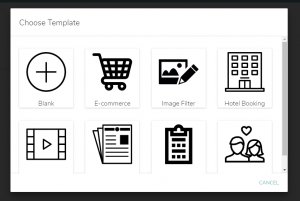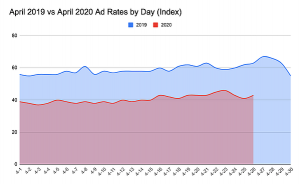Despite the rise of productivity tools such as Slack and Workplace, contributor Len Shneyder believes recent deals and funding events show that email is an increasingly important channel and will continue to grow.

Email has proven to be a solid investment; over the past few years, it’s seen over $365 million in investment across a broad range of email-centric companies. In 2016, we saw a flurry of funding events, exits, consolidation and divestments.
This series of events begs the question: Which way are the winds blowing for companies in the digital communications space? The “marketing clouds” appear to be getting bigger, but that hasn’t stopped the industry from growing new, highly specialized point solutions that address new channels, consumer behaviors and the swelling treasure trove of data available to marketers today.,
Fundraising
In 2015, SparkPost (then Message Systems) raised $21 million. Just recently, the company announced a $10 million round of funding.
Another high-profile funding event involved Iterable, a multi-channel marketing front end. Iterable raised $23 million in a series B funding round in December, demonstrating that there’s still space and interest from investors in the idea of marketing front ends and campaign management solutions.
The Iterable platform is a reimagining of the campaign management applications of old, but in a more efficient SaaS format. It addresses the multi-channel buying behavior of today’s hyper-connected consumer through multiple message delivery options, including email, SMS, push and social, while providing a CRM and workflows to achieve a universal view of the customer.
Funding events like Iterable further prove that customer-centric marketing applications are very much in vogue with investors and customers alike because no one has achieved a monopoly in the marketplace. My own company, SendGrid, announced a $33 million D round of funding to drive growth and the expansion of our Marketing front end.
In 2013, Marketo raised $80 million in an IPO. In March of 2016, Marketo was taken off the market through a private equity acquisition. Just recently, another private equity firm announced a large acquisition of Marketo stock, proving that all aspects of the digital communications world, even those that have been traded publicly and privately, from ESPs (email service providers) to sales and marketing automation, are still highly prized commodities.
Companies and investors alike see email as a fundamental and increasingly important channel. The technology and marketing channel boasts an incredibly high ROI (somewhere in the neighborhood of $31 for every $1 of investment, according to the Direct Marketing Association).
Despite productivity tools such as Slack, HipChat and Workplace, email’s year-over-year growth is unmatched, and ironically, all of these productivity tools rely on email as the basic way to establish user identity, login and notifications.
Commerce of any sort relies on email as a system of record. Sure, Slack may disrupt the business world down the road. And Workplace by Facebook will tap the collective familiarity of a generation that grew up on it. But email is at the very core of all of our online commerce.
According to a Harris Interactive and Listrak survey, more than a quarter (27 percent) reported that they were “extremely or very willing” to receive additional promotional emails each week from select retailers if they were personalized based on past shopping habits, with more than eight in 10 (82 percent) at least somewhat willing to do so.
Divestments
Back in 2004, Experian announced its acquisition of CheetahMail, an email service provider. It was viewed as a pretty bold move back then. By some accounts, Experian might have been the first marketing cloud provider. Its in-house data, combined with an email execution and delivery platform, made for a potent mix of services.
In November 2016, Experian announced that it would be selling off its email and cross-channel marketing division, effectively CheetahMail. Although there have been sell-offs of marketing applications, such as the recent divestment by Teradata of their marketing applications business unit (formerly Aprimo), this doesn’t seem as active as the buyer frenzy that has surrounded email over the last six or so years.
What we can imply is that private equity firms such as Marlin are bullish on email and marketing, given they now own both BlueHornet and Aprimo in their portfolio. What are investors and observers left to think? Well, as in baseball, anything can happen in the marketing world — and it often does.
Acquisitions
In November, Oracle announced its acquisition of Dyn, a DNS (Domain Name System) services and DDOS (Distributed Denial of Service) mitigation platform that also has a transactional email platform. This marks the third email platform to find its way into the Oracle marketing cloud. Oracle first acquired Eloqua, and then Responsys.
As a “marketing cloud” provider, Oracle has something of a complete-looking picture: Eloqua’s sales and marketing automation platform is complemented by Responsys’ retail-oriented platform and rounded out by the PushIO acquisition, giving the cloud a native mobile push component.
The newly acquired Dyn platform imbues Oracle with an API-driven infrastructure to power transactional email (their own or others). This configuration is replicated across the industry by the likes of IBM, Salesforce and Adobe, all of which push their own variation of the suite — a one-stop marketing shop that can transform the art of marketing into the science of engagement because they cover every consumer touch point.
The marketing mix is becoming more complex
As email approaches a near-real-time marketing channel, companies have to evolve how they think of the medium and refine their approach to it. Take, for instance, companies like eBay and Etsy that use purely home-grown campaign management and segmentation tools. These highly complex, data-driven use cases could never be serviced through a marketing cloud or a suite of “one size fits all” tools.
On the one hand, neither company is a traditional retailer with an SKU system and regular, recurring stock. They are based on unique catalogs that constantly roll over and expire. Treating consumers as largely featureless segments just based on one or two demographic criteria would stifle growth and shrink revenue.
The complexity of e-commerce and other internet-born services companies has helped buoy point solutions or platforms that can address massively scaled problems without attempting to regulate or integrate every point along the way. Take, for instance, email analytics company Email Co-Pilot, recently acquired by Return Path, that focused on the blowback and dynamics of messaging at scale. And scale, mind you, is on everyone’s mind.
Email is a highly instrumented channel that provides massive analytics capabilities. Combining the data that arises through the course of normal email operations with other repositories means that even before messaging is deployed, scaling problems around analysis, segmentation and targeting have to be solved before tackling the initial problem of deployment at scale.
Digital messaging in 2017 and beyond
According to the Chief Martech Infographic, the martech/ad tech space is composed of 3,874 companies; from 2015 to 2016, the year-over-year growth rate of new businesses in these verticals has been 87 percent! As large as the marketing clouds have grown, new point solutions are driving massive excitement from investors and companies alike.
The inbox should be treated with the careful application of email authentication. Companies like Valimail have proven that scaling email security has a place in this world through a $12 million funding round in 2016. Given the rise of phishing attacks in 2016, using email in a secure way will separate mature from immature solution providers, given not only the investment in the channel, but its reach and ultimate ROI.
In 2016, Gmail introduced an icon for users to differentiate between encrypted and non-encrypted email directly into the email client. There’s no question security will be top of mind in 2017.
What’s important to recognize here is how pervasive email is. Simply put, email will grow, and it will grow quite a bit. The number of companies solving messaging problems will also grow, and they’ll all be engaged in creating a more secure and real-time inbox along the way to ensure that the channel thrives.
Some opinions expressed in this article may be those of a guest author and not necessarily Marketing Land. Staff authors are listed here.
Marketing Land – Internet Marketing News, Strategies & Tips
(114)
Report Post






